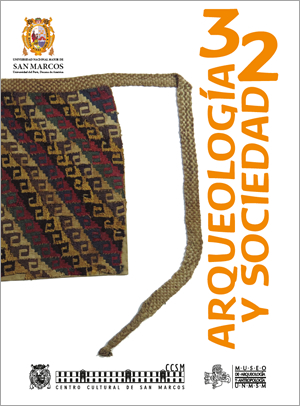ESTIMACIÓN DE RIESGO DE DESASTRE EN LAS QUEBRADAS DE SANTA CECILIA Y PILACUCHO DEL BARRIO SANTA ANA, AYACUCHO, 2014
DOI:
https://doi.org/10.15381/arqueolsoc.2016n32.e13329Keywords:
Natural, hazards, disaster risk and vulnerability, analysis technologyAbstract
The systematic study of the vulnerability of the streams of Santa Cecilia, La Union and Pilacucho of the Santa Ana, aims to generate knowledge on disaster-risk in different areas; estimation, frequency, calculation and risk analysis. Considering the existing natural hazard and geological, hydrometeorological and environmental scenarios to climate change (CC); marginalization of rural families have mostly been established in despicable land increasingly less secure physically and poverty levels have increased steadily with dire social consequences because they increase the risk and vulnerability to disasters. We use a whole methodology of parameters and levels recommended by the National Center for Estimation, Risk Reduction and Disaster Prevention (CENEPRED) and as a result was obtained Vulnerability; Pilacucho Quebrada is a critical area exposed to higher incidence of recurrent hazards such as flooding and pollution, which represent very high risks. Instead, the vulnerability prevalence rate is 80%, considered highly vulnerable, which means populations have poor responses to address the negative effects of natural and environmental disasters. It is recommended to develop a Comprehensive Management Plan of the Downs.Downloads
Published
Issue
Section
License
Copyright (c) 2017 Freddy León Nina

This work is licensed under a Creative Commons Attribution-NonCommercial-ShareAlike 4.0 International License.
THE AUTHORS RETAIN THEIR RIGHTS:
a. The authors retain their trademark and patent rights, and also on any process or procedure described in the article.
b. The authors retain the right to share, copy, distribute, perform and publicly communicate the article published in the Arqueología y Sociedad (for example, place it in an institutional repository or publish it in a book), with an acknowledgment of its initial publication in the Arqueología y Sociedad.
c. The authors retain the right to make a subsequent publication of their work, to use the article or any part of it (for example: a compilation of their works, notes for conferences, thesis, or for a book), provided that they indicate the source. of publication (authors of the work, journal, volume, number and date).






